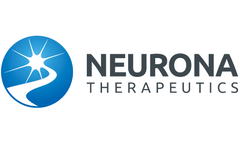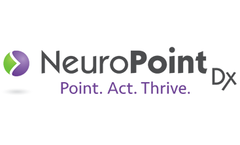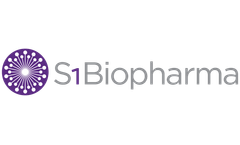Neurotransmitter Articles & Analysis
22 news found
These APIs are mostly regulators of neurotransmitters such as dopamine and serotonin, which are central to mental stability. ...
Our areas of expertise include new chemical entities (NCEs), carbohydrates, nucleotides, steroids, technical compounds, peptides, immunosuppressants, neurotransmitters, oligonucleotides, polymer mixtures, etc.,” commented the senior scientist of CD Genomics. ...
BOC Sciences is recently promoting a comprehensive portfolio of cosmetic peptides, including signal peptide, carrier peptide, neurotransmitter inhibitory peptide, and enzyme inhibitory peptide, which can be purchased both in bulk or in small quantities. ...
This creates a cumulative effect by releasing neurotransmitters in the brainstem and modulating brain networks associated with control of pain and mood. ...
” Relivion DP, which is worn as a headset, is designed to treat major depression by stimulating the release of neurotransmitters in the brainstem and modulating brain networks associated with mood control. ...
The fully-differentiated neural cells, called interneurons, secrete the inhibitory neurotransmitter gamma-aminobutyric acid (GABA). Delivered as a one-time dose, the human interneurons are intended to integrate and innervate on-target, providing long-term GABAergic inhibition to repair hyperexcitable neural networks. ...
Alpha-synuclein is a protein highly expressed in neurons, mostly at presynaptic terminals, suggesting a role in synaptic vesicle trafficking, synaptic functions and in regulation of neurotransmitter release at the synapse. Mutations in the gene encoding aSyn are known to cause or increase the risk of developing PD or DLB and have been shown to alter the secondary structure of ...
ByVaxxinit
The fully-differentiated neural cells, called interneurons, secrete the inhibitory neurotransmitter gamma-aminobutyric acid (GABA). Delivered as a one-time dose, the human interneurons are intended to integrate and innervate on-target, providing long-term GABAergic inhibition to repair hyperexcitable neural networks that underlie epilepsy, as well as other disorders of the ...
The fully-differentiated nerve cells, called interneurons, secrete the inhibitory neurotransmitter gamma-aminobutyric acid (GABA). Delivered as a one-time dose, the human interneurons are intended to integrate and innervate on-target, providing long-term GABAergic inhibition to repair hyperexcitable neural networks that underlie epilepsy, as well as other disorders of the nervous ...
The nerve cells, called interneurons, secrete the inhibitory neurotransmitter gamma-aminobutyric acid (GABA). Delivered as a one-time dose, the human interneurons are intended to integrate and innervate on-target, providing long-term GABAergic inhibition to repair hyperexcitable neural networks that underlie epilepsy, as well as other disorders of the nervous system. ...
This was quickly followed by a move to Endocrinology for 9 years as a senior research officer where numerous immunoassays were developed to determine the physiological functions of a number of hormones and neurotransmitters. This led to numerous (>100) publications in peer-reviewed journals and books. ...
This allows for the release of neurotransmitters in the brainstem and modulation of brain networks associated with control of pain. ...
This creates a cumulative effect by releasing neurotransmitters in the brainstem and modulating brain networks associated with control of pain and mood. ...
It is designed to treat major depression by stimulating the release of neurotransmitters in the brainstem and modulating brain networks associated with control of mood. ...
Additional amine- and amino acid-related metabotypes that also encompass important neurotransmitters identified 21.5% of the CAMP ASD subjects. A second panel of metabotypes associated with energy metabolism and mitochondrial function identified 22.3% of CAMP ASD subjects. ...
New York, NY – Jan. 4, 2019 – S1 Biopharma, Inc. (S1) announced today that the company will participate in a panel discussion, “Innovation Across Borders: Strategies for U.S. and Chinese Companies in the Health Sciences Industry,” to be hosted by Duane Morris LLP and the Chinese Biopharmaceutical Association (USA) on Tuesday, January 8, 2019 in San Francisco, CA. The ...
The therapy is designed to restore the balance of key neurotransmitters in the brain – dopamine, serotonin and norepinephrine – that are known to regulate sexual inhibition and sexual excitation. ...
New York, NY – December 20, 2018 – S1 Biopharma, Inc. (S1) announced today that the European Patent Office has granted a European Patent for the Company’s proprietary dual-mechanistic therapy Lorexys™ for hypoactive sexual desire disorder. A corresponding patent was previously granted in several countries in Asia including China, Japan, South Korea, and Singapore. The EU ...
It has a unique mechanism of action designed to restore the balance of three neurotransmitters – dopamine, serotonin and norepinephrine – that are known to regulate sexual inhibition and sexual excitation. ...
Lorexys is an investigational non-hormonal central nervous system (CNS) therapy designed to restore the balance of key neurotransmitters in the brain that affect sexual desire. ...









